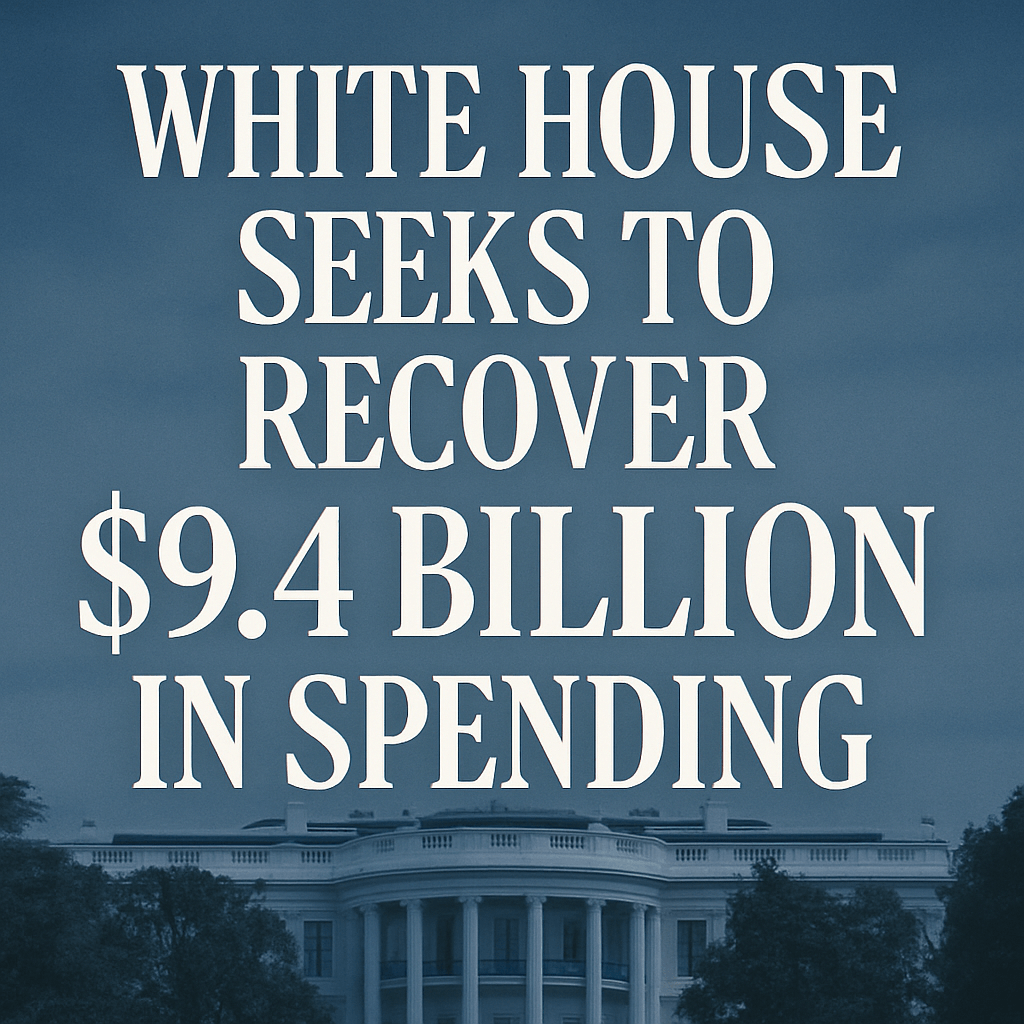White House Seeks to Recover $9.4 Billion in Spending

On Tuesday, the White House formally requested Congress to initiate a process to reclaim $9.4 billion in funds that had previously been approved for various government programs. This legislative maneuver, known as rescission, aims to redirect allocated financial resources away from initiatives deemed frivolous or wasteful by the current administration, particularly those associated with the Department of Government Efficiency, which has garnered attention due to its affiliation with high-profile entrepreneur Elon Musk.
Understanding Rescission: A Legislative Mechanism
The rescission request is a complex legislative procedure that entails the President seeking Congressional approval to withdraw previously appropriated funds. Such measures are governed by the Impoundment Control Act of 1974, which delineates the process through which the President is permitted to formally notify Congress of the funds they intend to withhold from expenditure. As the White House budget director, Russ Vought, indicated, if Congress ratifies this request, it would solidify many of the spending cuts championed by the Department of Government Efficiency.
Targeted Spending Cuts
According to a spokesperson from the White House Office of Management and Budget, the proposed rescission would affect several programs, with the most significant cuts including:
- $8.3 billion from the State Department and the U.S. Agency for International Development (USAID).
- Reduction of federal funding for NPR and PBS, both of which serve critical public broadcasting functions.
- Significant allocations such as $3 million for health initiatives in Zambia aimed at promoting circumcision and contraceptive access.
Vought emphasized that this request forms part of a broader strategy to cut federal spending, which he has characterized as essential for delivering fiscal discipline.
The Economic Implications of Rescissions
Despite the magnitude of the proposed rescission, experts question its efficacy in addressing the underlying issues of national debt. The Congressional Budget Office (CBO) estimates that the government may spend approximately $7 trillion this year, making the rescission proposal a mere 0.1% of that total. These figures indicate that while the request may satisfy immediate budgetary concerns, it is unlikely to exert significant influence over rising national debt levels, which are largely driven by entitlement programs like Social Security and Medicare.
Political Reactions and Future Prospects
Support for the rescission request is visible among Republican leadership. House Speaker Mike Johnson expressed his enthusiasm for the cuts, suggesting that they align with a Republican agenda to ensure fiscal responsibility. Furthermore, members of the House Freedom Caucus have echoed this sentiment, pledging their support for additional rescission packages that could follow.
In contrast, Senate Appropriations Committee Chair Susan Collins issued a cautionary note. She expressed the need for thorough review over the proposed cuts’ ramifications on national security, public health, and key community services. This dichotomy highlights the polarized views within Congress surrounding fiscal policy and allocation of federal resources.
Legal Considerations of the Rescission Process
The rescission request is, by design, a legally mandated process that requires Congressional scrutiny. While Vought argues that the Administration’s interpretation of the law aligns with the Constitution, criticism exists regarding the legality of withholding funds without explicit Congressional approval. Advocacy groups, such as the Committee for a Responsible Federal Budget, underscore that the possibility of passing rescission packages with a simple majority in the Senate presents both opportunities and challenges for the current administration.
Looking Ahead: What to Expect
As the fiscal year nears its conclusion in September, Vought has alluded to the potential for additional rescission requests, suggesting that Congress’ response to the current proposal may influence future fiscal strategies. Such developments would be closely watched by both fiscal conservatives and public policy advocates who seek to understand the long-term implications for government spending and accountability.
Conclusion
The White House’s $9.4 billion rescission request marks a critical juncture in the ongoing conversation about fiscal responsibility, government efficiency, and the allocation of taxpayer dollars. How Congress responds could set the tone for future budgetary measures and impact the federal financial landscape for years to come.